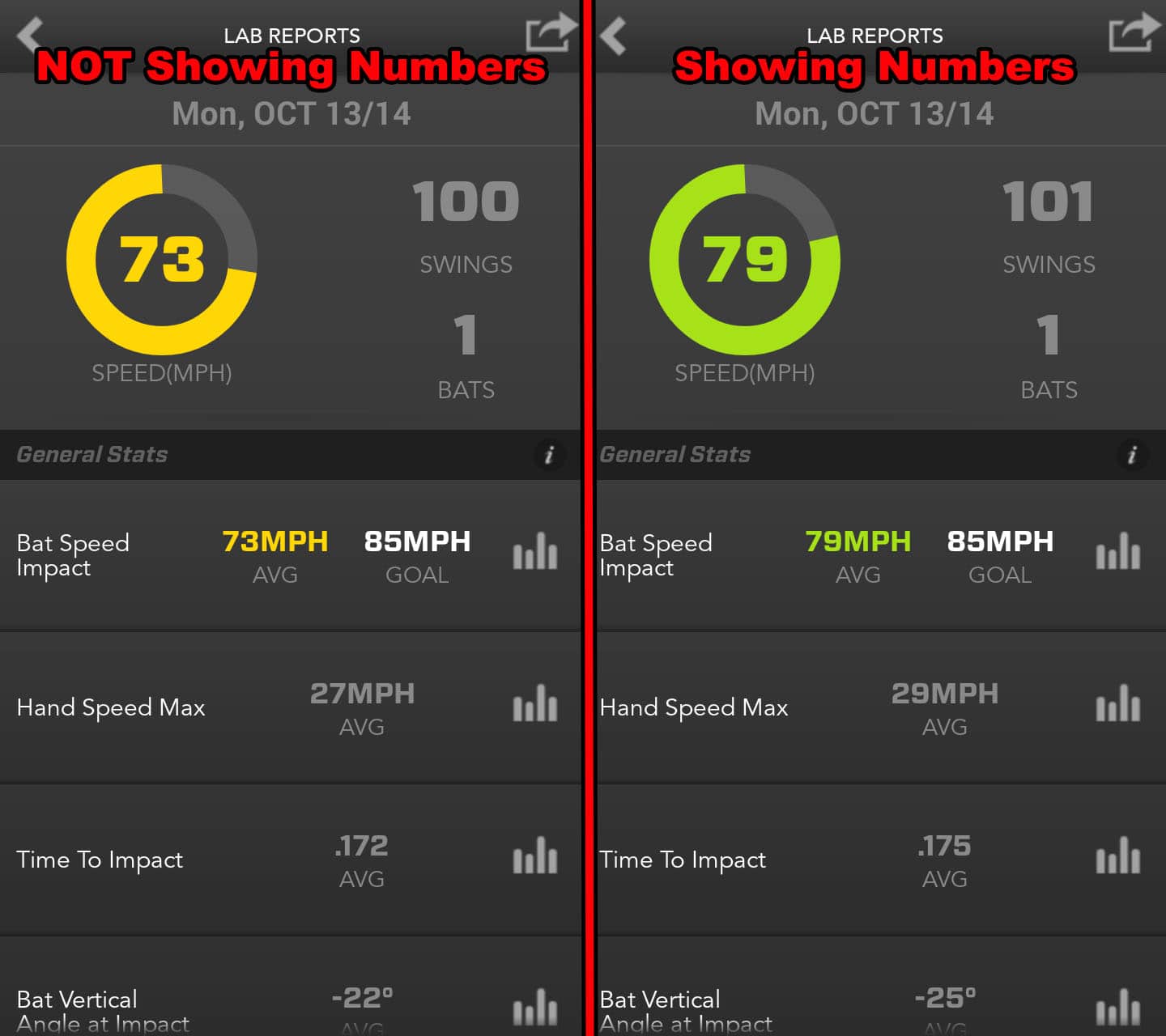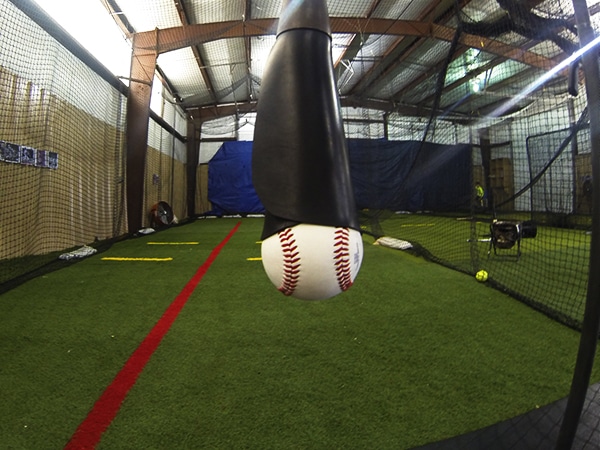Discover the Backspin Batting Tee, which is the best high school baseball, fastpitch, and slow pitch softball professional hitting trainer for learning how to hit more line drives instead of ground balls. See how it works in this drill review…
Backspin Batting Tee: The Quickest & Easiest Way to Drive the Ball Using A Baseball Hitting Tee

Meet the Backspin Batting Tee team. Photo courtesy: BackSpinTee.com
This is the first in a 3-part baseball hitting tee interview series…
One of the most frustrating things for coaches I’m in touch with (myself included) is finding minds that think alike when it comes to applying human movement science to hitting.
In other words, how do we separate the “weeds” from the grass? Below is an interview I did with one of the three hitting and movement experts, Taylor Gardner and his innovative batting tee.
First a brief introduction…
Taylor Gardner is the inventor of the Backspin batting tee (I carry the Backspin Tee at TheStartingLineupStore.com), that received “Best In Show” Awards at the 2015 American Baseball Coaches Association (ABCA) Convention in Orlando, Florida. The baseball hitting tee concept is really simple really, practice hitting the bottom half of the ball (see video above).
At the convention, Taylor had a coach come up to his booth, take swings off his Backspin batting tee, and said that it was nearly impossible to swing “down” on the ball, because of the batting tee design.
SCIENCE-BASED TRAINING:
Improve your hitting strategy dramatically by applying human movement principles.
Learn not only how and what to train but also the science behind the methods.
The “ugly truth” about the batting tee?

Photo courtesy: BackSpinTee.com
…If youth hitters aren’t coached properly, then they’ll default to hitting the top half of the ball, to avoid knocking the tee over. Taylor’s Backspin baseball hitting tee turn this ugly truth on it’s head…literally 😛
Not only did Taylor breath new life into the batting tee, but he’s a student of hitting. He uses human movement science like we do. I met him on my Facebook fanpage, and after a couple interactions, I had to interview him for the HPL blog…
Taylor Gardner BackSpin Baseball Hitting Tee Interview…
If you were to train me for four weeks for a HUGE tournament and had a million dollars on the line, what would the training look like? What if I trained for eight weeks?
TG: With 4-weeks of training…
…we would have time to adjust any swing path flaws with video analysis so that everyone was seeing the same movements. We would do positional strength test to show if their are any weak points in the swing that might be causing a dropping barrel.
Your grip would be looked at to ensure that at contact both wrist were close to 90 degrees, and then keep that grip (don’t just change it for comfort).
Simple soft-toss from in front would show any basic timing issues, as well as your ability to get in position to the ball on time to use a proper swing path. Bad positioning at landing can cause hitters to change their swings regardless.
I practice a “1st baseman” drill where you train your eyes to step towards a ball before you catch it (Learned from Barry Bonds) to help your body learn how to get to the pitch more efficiently.
Depending on how good your timing, body positions, and swing path were, we could then move onto any movements in the body that might need more exaggeration, for example: if you were very stiff with your legs, and had a hard time getting to lower pitches, we could do variations of tee work and soft toss to exaggerate that one body movement, and these same techniques would apply if you had connection problems with your arms, hands, head movement, etc that may need to be fixed more quickly.
After your technique is sufficient in the 4 week time frame, I would have you learn how to “time” a pitcher and practice different fastball speeds. For example: if you are facing mostly 80mph pitching and slower, we would practice speeds of batting practice (with the new exaggerated movements now set) that were no quicker than .47 seconds out of the pitcher’s hand to the front of the plate (a simple stopwatch would get us close).
If you were facing 90mph then we would train your stride timing to adjust to .40 seconds, but no faster. Pitcher’s don’t accidentally throw their fastest pitch 10mph faster….In the 4 weeks we would conquer the technique of the swing first before seeing live pitching. You came to change your swing, and 4 weeks is plenty of time to make physical adjustments, the rest of the time would be focused on the timing and reaction to positions in the zone.
If I had 8-weeks with you,

Photo courtesy: BackSpinTee.com
…we would take the same approach, I don’t believe their are quick fixes, unless your swing is already close to doing the right movements, but I would ask you questions about the approach at the plate, and we would keep it as simple as possible. The pitcher throws his fastball 70%+ most of the time, so you can trust that that is what you will see.
You can always buy time (wait) in the swing, but you cannot speed up faster than your body will allow. You would learn to set your timing approach up to hit that particular pitcher’s speed, then time your stride accordingly. Some hitters need to wait longer, or start sooner depending on their tendencies.
Your set up (assuming isn’t an issue) would be able to swing level to a high pitch (considered a pitcher’s mistake in Pro ball) because it is the easiest pitch to get to the bottom half of the ball, and would learn to adjust to the height adjustment of off speed and swing to the pitch accordingly.
Use Discount Code: GET10OFF At Checkout To Get 10% OFF Our Favorite 'Backspin' Batting Tee
CLICK TO LEARN MORE...
Use Discount Code: GET10OFF At Checkout To Get 10% OFF Our Favorite 'Backspin' Batting Tee
CLICK TO LEARN MORE...
Every physical movement that would be instructed would have your own style to it. There is no cookie cutter swing, only movements (and maybe some variations of those movements) that were backed by facts and studied knowledge that can be performed by the human body.
Getting on path with the pitch, hitting the middle/bottom half of the ball at a contact point that is proven for max energy connection into the ball would be taught. How high or low you consistently hit balls (angles) is more important than pulling it or going to opposite field. This has been proven time, and time again.
What makes you different? Who trained you or influenced you?
TG: Matt Nokes (Silver Slugger Award Winner, New York Yankees) Boots Day (Montreal Expos, and knew Ted Williams), Jarrett Gardner, Professional Pitching Coach
What are your favorite instructional books or resources on the subject? If people had to teach themselves, what would you suggest they use?
TG: DVD-Pyramid Of Hitting. Training tool-The Back Spin Batting Tee.
What are the biggest mistakes and myths you see in hitting? What are the biggest wastes of time?
TG: Hit the top of the ball to make it rise with backspin. Soft-toss from behind the hitter. Your hips are your main source for power. Quick hands. Pulling with the bottom hand, and pushing with the top hand. You can stay “through” a ball longer if you try, the ball only stays on the bat .0007 seconds, no matter how you hit it. Swing down and through a ball. Keep your hands inside the ball. Get your foot down early. You have to have a straight front leg to hit. You have to rotate your back foot for power. “Don’t worry about timing, just react to the pitcher.” Foul off offspeed and wait for fastball. They all are a waste of time, and I can explain how.
…
Thank you Taylor!
Here’s how you can stay updated with Taylor Gardner and his BackSpin batting tee:
Please direct baseball hitting tee questions and comments below…
Use Discount Code: GET10OFF At Checkout To Get 10% OFF Our Favorite 'Backspin' Batting Tee
CLICK TO LEARN MORE...
Use Discount Code: GET10OFF At Checkout To Get 10% OFF Our Favorite 'Backspin' Batting Tee
CLICK TO LEARN MORE...



![Buster Posey VIDEO: Not ALL In The Hips [Experiment]](https://hittingperformancelab.com/wp-content/uploads/2014/10/buster-posey-showing-number-compare.png)




























